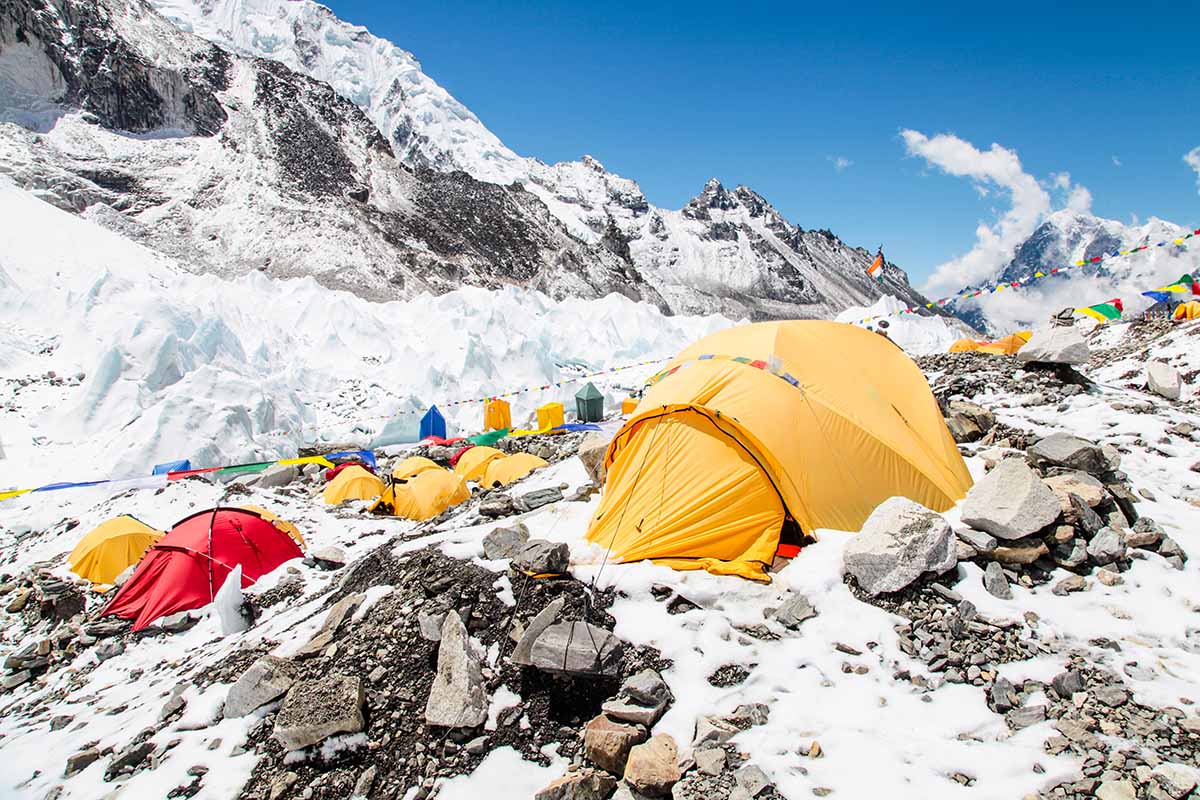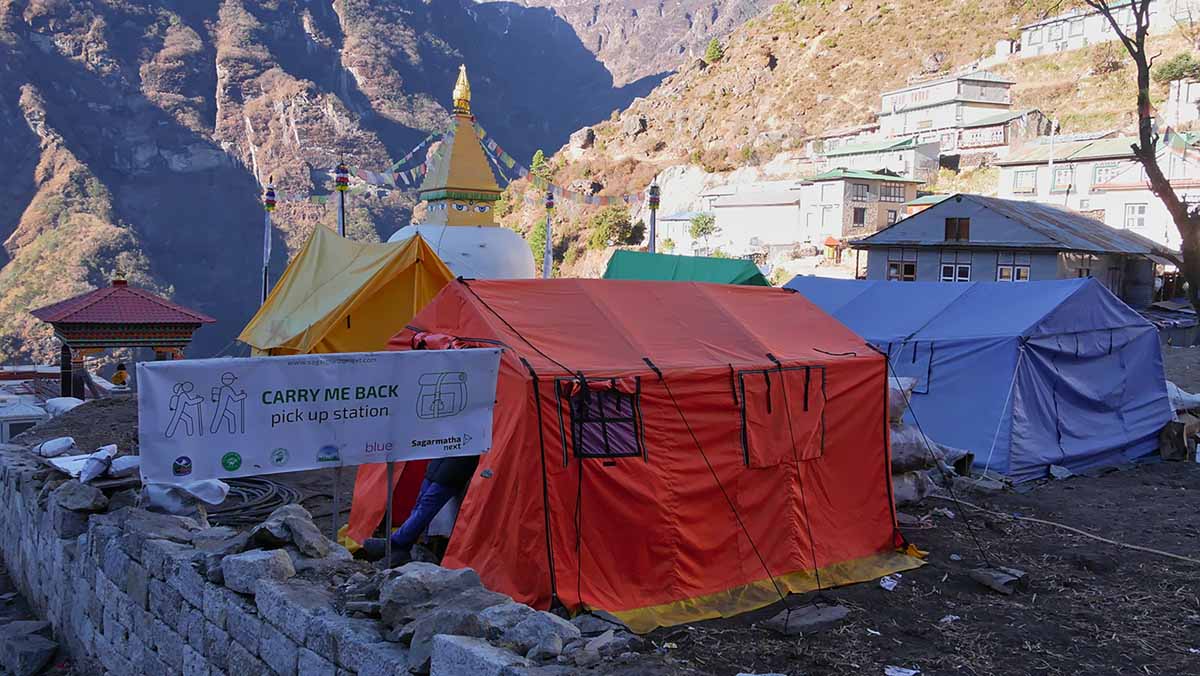
The world’s highest mountain is covered in rubbish, but clean-up operations are underway
By Kamila Obuchová
Since the first known summit of Mount Everest in 1953 by New Zealander Edmund Hillary and Sherpa Tenzing Norgay, more and more climbers have set out to reach the highest point in the world (8,849 metres). Unfortunately, a growing number of people also means that the mountain is suffering a serious waste problem, and cleaning up Mount Everest has become an important environmental concern.
According to the Himalayan Database, the most comprehensive record of successful summits in the region:
- 6,098 different people have summited Everest for a total of 10,656 summits
- 305 people have died attempting Everest on all routes
Things took a serious dip in 2020, when Everest was closed due to the Covid-19 pandemic, however, in 2021 Nepal began to issue permits again. Sagarmatha National Park, created in 1976 to protect the mountain and its wildlife, receives around 100,000 visitors each year, while during the main season more than 700 people go to Everest Base Camp in a single day. Over 600 people attempt to summit Mount Everest every climbing season and they are accompanied by local workers, often Sherpa people.
Since the early days of Everest expeditions, oxygen tanks, food containers and climbing equipment have been discarded on and around the famous mountain. Just a decade after Hillary and Norgay’s summit, mountaineer Barry Bishop called the mountain ‘the world’s highest junk yard’. By the start of the 1990s, the issue was attracting attention from the international press.
What is the waste situation on Everest now?
The Everest Summiteers Association estimates that the Earth’s highest point is covered in about 30 tonnes of waste, despite concerted clean-up campaigns over the years. Even more rubbish is now being discovered due to climate change-induced glacier melting.
Cooking and climbing equipment are not the only things left behind. Frozen human excrement poses a serious risk to surrounding communities as it has contaminated water sources in the Sagarmatha National Park, a protected area of the Himalayas that includes Mount Everest. It has also been reported that melting snow is exposing the bodies of long-dead mountaineers.

Removing the waste
It has often been suggested that Nepal should, at least temporarily, significantly reduce climbing permits to tackle the twin problems of waste and overcrowding. Given that the hundreds of summits every year generate about $300 million for the country, however, with $4 million just from the climbing permits, it’s a tough economic decision. The COVID-19 travel restrictions demonstrated how critical this revenue is for the country’s economy, as well as for the porters and guides.
The Nepal government has introduced some measures to remove waste. In 2014, it introduced a deposit scheme for hopeful summiteers. To retrieve their $4,000, all climbers must return to Base Camp with the average amount of waste a single person produces during the climb – about eight kilograms.
In addition a number of NGOs and other organisations are managing clean-up operations on the slopes. They include:
The Nepal Army
In 2022, the Nepal Army announced a plan to collect 35 tonnes of garbage from four mountains including Mount Everest (14 tonnes from Everest alone). According to Army Spokesperson Narayan Silwal, the Safa Himal Abhiyan (the Clean Mountain Campaign) will see a total of 91 people, including doctors and Sherpas deployed for the garbage collection.
The programme is a continuation of a project previously conducted in 2019 and 2021, during which the army claimed to have collected 10 tonnes of garbage and 27.6 tonnes of garbage respectively. After the 2019 season there was some criticism of the project, with leading mountaineers noting that the team did not have the skills to reach the highest points.
This year, however, the expedition aims to clean rubbish not only from the base camps but also in the higher parts of the mountain. After collection, the waste will be divided, with the decomposable trash being managed by local authorities. Rubbish that is non-decomposable will be transported by plane to Katmandu where it will be handled by external companies.

The Bally Peak Initiative
One of the longest-running clean-up projects in the region, the Eco Everest Expedition has been cleaning the mountain’s waste since 2008. In 2019 it joined forces with luxury fashion brand Bally to expand the project: ‘The point is to get the message across. Mountains mean so much to people whether consciously or unconsciously. They are among the last vestiges of nature,’ Eco Everest founder Dawa Steven Sherpa told GQ in 2019. In less than 50 days, the team removed almost two tonnes of rubbish from Everest and several other peaks.
The Clean Everest Project
Marion Chaygneaud-Dupuy, three-time Everest conqueror, has long witnessed the mountain’s waste problem, telling the Yves Rocher Foundation in 2019 that: ‘Becoming a guide gave me insight into the ecological devastation that these recurring expeditions wreak.’ In 2017 she utilised her skills and good connections to launch the Clean Everest project. Over the course of three years, and along with a team of 50 locals, she rid the mountain of over eight tonnes of rubbish, winning the ‘Terre de Femmes’ award given out by Fondation Yves Rocher.
The Big Mountain Cleanup
Having broken records when he reached the world’s 14 highest peaks within a single season in 2019, Nirmal Purja launched the Big Mountain Cleanup project, now in the second of its four stages, which is focused on Everest. In addition to removing tonnes of waste, the project puts a strong emphasis on giving back to local communities: ‘Alongside the wider objective, we will also be creating employment opportunities within local mountain communities,’ said Purja.




